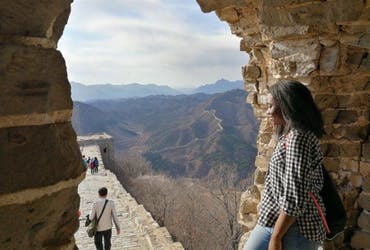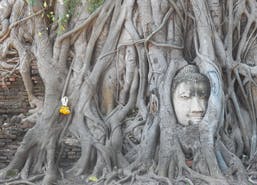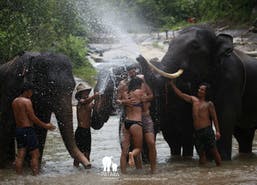India: The Way It Is
India is a country that already fascinated me for a long time. When I got the opportunity to travel with a company to India, I chose a women’s only group trip called “India, The Way It Is.” I hesitated for a couple of days but in the end, my curiosity won over my doubts. I had never before traveled without my husband, it was a challenge but one I will never regret for the rest of my entire life.
The destination of our trip was the state of West-Bengal and I traveled with four other ladies and our female guide to Kolkata where our trip started. Kolkata and by extension West-Bengal, is still a very authentic part of India. Kolkata, formerly known as Calcutta in English and also called the City of Joy, still has lots of colonial buildings from the period of the British East India Company. Also, this is the last city of India where the typical yellow cabs are running, as well as trams from the colonial time are still in use.


We visited Victoria Memorial Hall, built to honor Queen Victoria, although she never saw it in real life. In the Botanical Garden, we admired the Great Banyan Tree, a tree of 250 years old. What is special about this tree is the growth of aerial roots (over 3600) so it has the appearance of a whole forest but in reality, it’s one tree with a spread of 300 mtr – 984 ft. The historic Kumartuli quarter is famous for its idols makers and clay statues. The narrow streets are full of small workshops and strolling around there while seeing the idols makers at work with straw and clay is really a wonderful experience and a ‘window’ to real life.
The Jainism is one of the three major religions of India. Followers are called Jains and their temples are beautifully decorated; we visited two of them. Mostly for decoration, they use white marble and many mosaic and small mirrors. Jains try to live as pure as possible and the mirrors are a reference to the confrontation with themselves and the constant question to themselves if they are doing well.

We visited the Malik Ghat Flower Market, situated near the Hooghly River and under the Howrah Bridge. Very early in the morning, the flower sellers arrive with their goods carried on the head in big baskets or bags. It is not a usual flower market like the way we know a flower market in the Western world. All flowers on this market are for offering and mostly only the flowers themselves are used; no leaves, no stalks. The flowers are ripened into garlands. Some make the garlands on the market, others make them at home and carry countless of garlands in thick bunches on their shoulders. It is a wonderful experience to hang around this market. It looks like a maze with countless stalls, narrow passages and thousands of flowers!
In one of the streets around Court of Justice, we experienced a world of difference with justice and legal. It is much difference than the Western world. On the footpath, many clerks are offering their services to the lawyers from in their ‘office’ that is nothing more than a small table under a shelter of plastic tarpaulin. To draw up the court records, they use old-fashioned typewriters and carbon paper.


Very emotional and touching moments we experienced by visiting the Missionaries of Charity, established by Mother Teresa. At the moment of our visit to the orphanage, sisters and volunteers took care of about 122 small children and baby’s. It’s so hard to know mothers renounce their children because of poverty. Indeed poverty is a big problem in India. It was for me at certain moments, and especially in the city of Kolkata. It was very shocking to be confronted with the beggars, begging children, the slums, the chaos, the garbage, the poor hygienic living conditions, countless street dogs, the never stopping noise, the never stopping traffic …. But it was an experience I didn’t want to miss!
Another experience that impressed me was my visit to the Kalighat Temple. It is a Hindu temple dedicated to goddess Kali and it is one of Kolkata’s most sacred sites. In the very early morning (6 AM), many crowds gather to pray and bring offers. We also went in to observe all rituals of reciting mantras and devoted praying. We left Kolkata for the second part of our trip that brought us to the National Park Sundarbans. Specific for the Sundarbans are the landscapes with mangroves and creeks. The growth of mangroves is specifically with aerial roots because of the muddy bottom. Mangroves can grow high like trees or lower like bushes. The sights on the aerial roots can be very special and unique. The park is also famous for a chance to see the Bengal Tiger but we were not lucky enough to spot one. Between the mangroves and creeks, local life is going on in the many rural villages. Men and women, get their income from fishing. It is a very harsh life because it’s difficult fishing barefoot on the slippery bottom full of pointy mangrove roots. But the biggest danger is that that the fishing people can be attached by a tiger!

Another source of income for locals is the honey of the jungle. Around February, the bees return from the Himalaya and they start the production. In April, the honey collectors go into the jungle for 3 weeks to collect the honey and that is sold as a delicacy. From the region of Kolkata, we took a domestic flight to Bagdogra for exploring the region around Darjeeling that formed the third part of our trip. It is a region that is world famous for the finest varieties of tea. Our first stay was in the city of Darjeeling and we were guests in the legendary Windamere Hotel. Arriving there felt like taking a step into colonial history. The hotel was built in 1939 and many colonials came to relax in the calm atmosphere with views of the Himalaya when they wanted to escape the warmth of Kolkata. The English cottage garden, the rooms decorated with antique mahogany furniture, the personal service, the fine food … all ingredients are present to give the guests a wonderful stay.
Of course a visit to a tea estate had to be a part of our program. We visited Happy Valley Tea Estate and met Husun, a retired tea picker. In her cosy and tiny house on the plantation, she welcomed us and she showed us different varieties. She explained the differences in the manufacturing process to obtain green tea, black tea, white tea and she told stories about her life as a picker. Fascinating!

We also immersed ourselves into Tibetan Buddhism. We visited few temples, joined a ‘puja’ (prayers ceremony) where we took part by reciting mantras and using the drum, gave a twist to the prayer wheel and walked clockwise around the stupa. We also experienced very special moments during our visit to the Druk Thupten Sangag Choling Monastery. At the moment of our arrival, a monk and a novice were announcing the start of the puja for their fellow monks of the monastery. This happens by blowing on a shell horn. We watched the whole ceremony and all rituals; the noise of the drums, the reciting of the mantras, the interior of the prayers room, the sharing of the butter tea; it was an impressive spectacle!
To learn much more about tea and all concerning the picking and the manufacturing, we stayed one night at Sourenee Tea Estate. We completed a fabulous hike guided by the manager. During a 2 hours walk through the plantation, we met several women active in picking between the tea bushes on the steep green slopes. The misty weather that day gave the environment a mysterious and mystic atmosphere and it was a memorable hike. Furthermore, we got the opportunity to look around in the factory. From the manager, we got lots of information about the drying process, the different machines, the manufacturing process, the different varieties, the trade and much more.
India was a wonderful experience: a country full of tradition, culture and religion, color, the most friendly people and lots more to discover! I hope to go back one day!




